If you’re looking to make money in music, you need to explore multiple revenue streams. Streaming royalties from platforms like Spotify and Apple Music can bring in consistent income, but it’s not the only way. Music publishing, merchandise sales, and live performances also offer substantial opportunities. Sync licensing can get your music into films and commercials, while teaching music or doing session work can provide steady gigs. Ever considered crowdfunding or YouTube monetization? Each method has its own benefits and challenges. So, how do you effectively balance and leverage these income sources?
TL-DR
- Earn streaming royalties from platforms like Spotify and Apple Music by accumulating millions of streams.
- Generate income through music publishing, including performance and mechanical royalties, and sync placements in media.
- Sell merchandise online and at live performances to boost revenue and engage with fans.
- Monetize YouTube content by reaching ad revenue milestones and optimizing channel profitability.
- Offer music lessons or session work to diversify income and showcase your talents.
Streaming Royalties
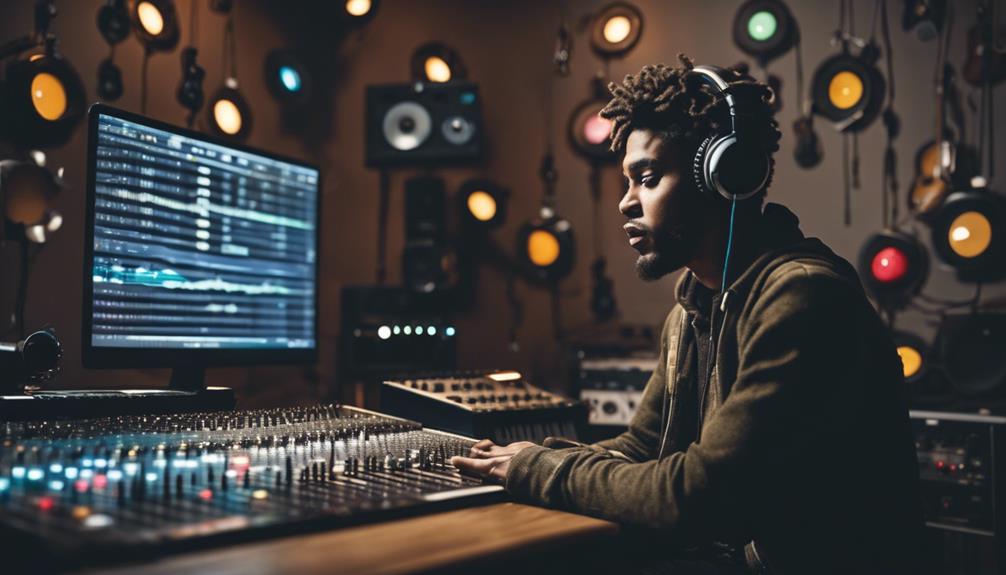
When your music is streamed on platforms like Spotify and Apple Music, you earn streaming royalties. As an artist, this is one of the primary ways to make money from your music. Each stream generates a fraction of a penny, and while rates vary depending on the platform and your contract, the income adds up over time. However, you’ll need millions of streams to see significant earnings.
To maximize your income, understanding the intricacies of streaming royalties is essential. Different platforms have different payout rates, so being aware of where your music performs best can help you strategize your distribution efforts. Use analytics tools provided by music distributors and streaming platforms (learn more) to track your streams and royalties. These insights can show you which songs are most popular and where your audience is located, allowing you to tailor your promotional activities effectively.
Additionally, ensuring your music is available across multiple streaming platforms increases your chances of higher earnings. Diversifying your distribution means reaching a broader audience and potentially boosting your stream counts.
In the end, consistent tracking and strategic distribution are key to making the most out of your streaming royalties.
Music Publishing
Beyond streaming royalties, another significant revenue stream for musicians is music publishing, which focuses on managing and monetizing your compositions. Music publishing involves administering copyrights, negotiating licensing deals, and guaranteeing you receive proper compensation for your work. By understanding the different types of royalties, you can maximize your income.
Performance royalties are earned whenever your music is played publicly, whether on the radio, in a live venue, or even in a restaurant. To track and collect these royalties, register your songs with performing rights organizations (PROs) like ASCAP or BMI. These organizations monitor public performances and distribute royalties accordingly.
Mechanical royalties come from the reproduction of your music, such as when it’s sold in physical form or streamed online. Sync placements, where your music is used in movies, television shows, or commercials, can also be a lucrative source of income.
Here’s how to boost your earnings:
- Register with a PRO: This ensures you get paid for public performances.
- Understand licensing: Know how to negotiate deals for using your music.
- Explore sync placements: Get your songs featured in various media.
Merchandise Sales

To maximize your earnings, offer a variety of merchandise items that cater to different tastes and budgets.
Setting up an online store is essential, as it allows fans from anywhere to purchase your products easily.
Platforms like Shopify make this process straightforward and efficient.
Product Variety
Providing a range of merchandise can greatly enhance your income and help foster a loyal fan base. Offering a diverse selection of merch not only caters to different tastes but also keeps your fans engaged and excited. When you introduce product variety, you give fans more reasons to support you, which can greatly boost your revenue.
To maximize your sales, consider these strategies:
- Limited Edition Items: Create a sense of urgency and exclusivity by offering limited edition products. These special items can drive sales and make fans feel like part of an elite group.
- Strategic Timing: Release new merch strategically, such as after a successful tour or album drop. This ensures you capitalize on heightened fan engagement and interest.
- Engaging Platforms: Utilize platforms like Shopify to set up your online store. These platforms make it easy for you to manage inventory, track sales, and reach a global audience.
Online Store Setup
With a diverse range of merchandise ready, setting up an online store becomes your next step to maximize sales and reach a global audience. Platforms like Shopify make it easy to create an online store where you can sell merch like t-shirts, posters, and accessories. Utilizing print-on-demand services guarantees that production and shipping are automated, so you don’t have to manage inventory.
This approach allows you to focus on designing unique, eye-catching merchandise that reflects your brand and music style.
To enhance merch sales, offer a variety of items catering to different fan preferences. Promote your online store using social media. Share posts showcasing your latest merchandise and engage with your audience to create buzz.
Email marketing is another powerful tool. Send newsletters highlighting new products, special discounts, and exclusive offers. Collaborations can also drive traffic to your store. Partner with other artists or influencers to reach a broader audience and increase your visibility.
Live Performances
How can musicians maximize their income from live performances?
Start by focusing on ticket sales and venue payments. Setting the right ticket prices and negotiating fair splits with support acts can greatly boost your revenue. Additionally, keep an eye on your expenses—venue hire, catering, and travel costs can add up quickly, so budgeting is important.
To maximize earnings, consider these strategies:
- Selling Merchandise:
Offer exclusive items like T-shirts, posters, and albums at your shows. Fans love to take home a piece of the experience.
- Accurate Set Lists:
By keeping detailed set lists, you can claim live performance royalties. Organizations like ASCAP and BMI pay artists for live performances of their registered songs.
- Engage with Fans:
Building a strong connection with your audience can lead to higher ticket sales and more merchandise purchases.
Sync Licensing
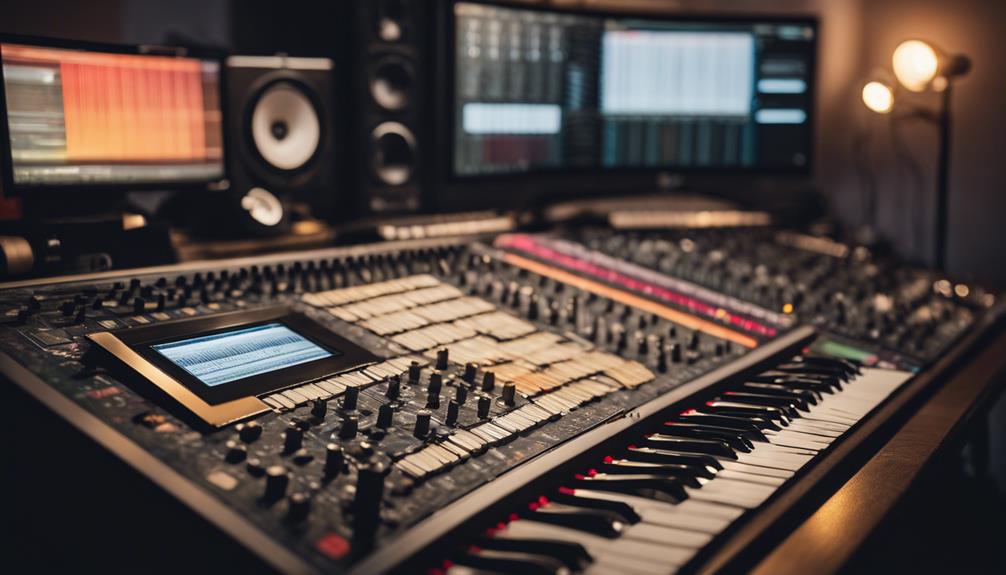
To start finding licensing opportunities, you should connect with sync licensing libraries and platforms like Music Gateway and Royalty Exchange.
Once you’ve identified potential deals, negotiating terms such as upfront payments and royalties is essential.
Make sure you have ownership rights to your compositions to maximize your earnings and control.
Finding Licensing Opportunities
Finding licensing opportunities for your music involves identifying platforms and libraries that connect musicians with potential buyers seeking synchronization rights. Sync licensing is a valuable revenue stream, allowing your music compositions to be featured in visual media such as TV shows, movies, and advertisements.
To effectively monetize your music, you need to understand both sync and master licensing, as well as ownership rights. Start by exploring music libraries like Musicbed and Soundstripe, which specialize in connecting musicians with licensing opportunities. These platforms allow you to upload your polished recordings and make them available for potential buyers. Another excellent resource is Music Gateway, where buyers actively seek out tracks for various projects.
Platforms like Musicbed and Soundstripe help sell your tracks for sync and master licensing.
TV shows, movies, and ads are always in need of new music, providing consistent demand.
Sync licensing can generate significant income through upfront payments and royalties for multiple placements.
Negotiating Licensing Deals
Securing a favorable sync licensing deal involves negotiating both upfront payments and royalty terms for the use of your music. In sync licensing, you’ll need to grant permission for your composition to be used in visual media such as TV shows, movies, or advertisements.
Start by understanding your ownership status. If you hold full rights to your music, you have more leverage in negotiations.
Platforms like Music Gateway can be invaluable in connecting you with potential buyers seeking synchronization rights. They also offer access to licensing libraries, which can broaden your opportunities.
When negotiating sync deals, aim for a balance between upfront payments and ongoing royalties. Upfront payments provide immediate income, while royalties offer long-term financial benefits.
Ensure that you clarify the scope of use in the agreement. For example, will your music be used in a single episode or across an entire series? The broader the usage, the higher the potential income.
Always pay attention to the fine print and consult a legal expert if needed.
With the right approach, sync licensing can be a lucrative avenue for monetizing your music and achieving a sustainable income.
Brand Partnerships
Collaborating with relevant brands in the music industry can greatly enhance your income through endorsement deals. Start by building partnerships with local brands or independent companies. This approach not only helps you gain experience but also establishes your credibility. Once you’ve built a portfolio of successful collaborations, you can approach larger companies for more lucrative opportunities.
It’s important to make sure that the brands you partner with align with your artist image. Authenticity and credibility are essential; your fans should feel that these partnerships are a natural fit for you. This alignment helps maintain fan loyalty and prevents any backlash that could arise from seemingly inauthentic endorsements.
Leveraging brand partnerships allows you to diversify and expand your revenue sources. Instead of relying solely on music sales or live performances, these partnerships offer additional financial stability.
When considering brand partnerships, keep these tips in mind:
- Start Local: Begin with local brands to build a credible portfolio.
- Align Values: Choose brands that naturally fit your image and values.
- Fan First: Prioritize your fans’ perception to maintain loyalty.
Crowdfunding
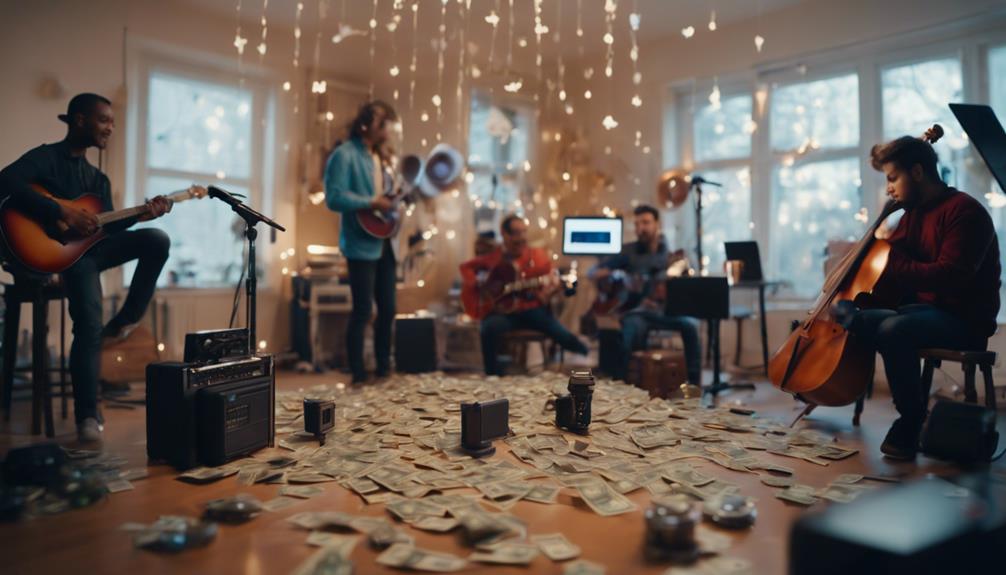
Crowdfunding offers a dynamic way for musicians to raise funds directly from their fans while fostering deeper connections and creative freedom. Platforms like Kickstarter and Indiegogo enable you to launch fundraising campaigns for your music projects, tours, and album production. By leveraging these platforms, you can secure financial support and engage your fan base in a meaningful way.
To attract supporters, offer exclusive perks and rewards. These might include limited-edition merchandise, behind-the-scenes content, or personalized experiences. Such incentives can make your campaign more appealing and increase the likelihood of contributions. Additionally, successful crowdfunding not only funds your creative projects but also helps build a loyal fan base.
Fan subscriptions through platforms like Patreon can provide ongoing financial support. This approach allows fans to contribute regularly, ensuring a steady stream of income for your music endeavors. By offering tiered rewards, you can appeal to different levels of supporters, from casual listeners to hardcore fans.
Crowdfunding empowers you to bring your creative visions to life without relying on traditional music industry routes. It’s a way to maintain artistic control while connecting deeply with your audience.
Teaching Music
As you explore different ways to make money in music, teaching lessons online can provide a steady income stream while sharing your expertise with aspiring musicians. With rates often ranging from $30 to $60 per hour, offering music lessons can be both fulfilling and financially rewarding.
To maximize your reach and earnings, consider offering lessons in various instruments. This not only allows you to cater to a wider student base but also diversifies your income streams. Platforms like TakeLessons make it easy to connect with students and manage your online teaching schedule.
Here are some tips to help you succeed in online music teaching:
- Set competitive pricing: Research the market rates and offer prices that attract students while ensuring you’re compensated fairly.
- Provide quality instruction: Focus on delivering high-quality, engaging lessons to keep your students motivated and coming back for more.
- Diversify your offerings: In addition to one-on-one lessons, consider group sessions, workshops, and specialized courses to appeal to different learning preferences.
Session Work
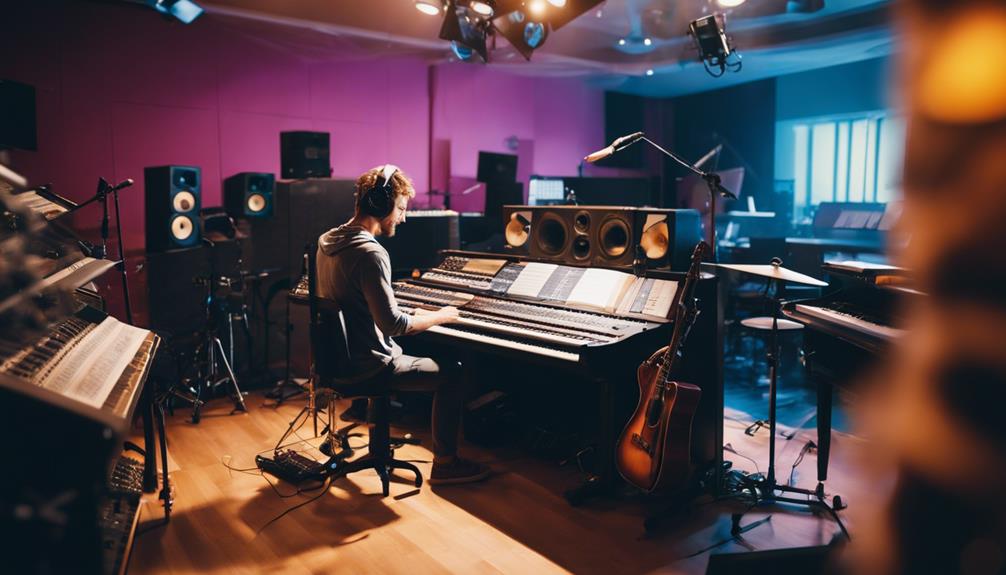
Performing as a session musician allows you to showcase your talents while earning high hourly rates and potential royalties. Session work involves lending your musical skills to other artists’ studio recordings, making it a lucrative way to earn income. As a skilled musician, you can contribute to various music projects, enhancing your portfolio and gaining recognition in the industry.
With the rise of digital connectivity, session musicians now have global opportunities. You can offer your services online, collaborating with artists from around the world without ever leaving your home. This broadens your scope and increases your chances of landing more gigs, thereby boosting your income.
Negotiating your fees or royalties is an essential part of session work. Make sure you’re compensated fairly for your studio contributions, whether through a flat fee or a royalty arrangement. Hourly rates for session musicians can be quite high, making this an attractive option for those looking to make a living from their musical talents.
Offering your skills as a session musician for hire not only helps you earn income but also allows you to be part of diverse and exciting music projects. It’s a fantastic way to build your reputation and expand your network in the music industry.
Digital Downloads
While session work offers substantial income, selling digital downloads of your music can also be a lucrative revenue stream. Digital downloads allow fans to purchase and own your music, supporting you directly. Platforms like Bandcamp and iTunes make it easy for music artists to make money from digital music sales.
By leveraging these platforms, you can:
- Sell digital downloads directly to fans: Keep a higher percentage of revenue and engage with your audience.
- Promote your original music: Reach a wider audience without the need for physical distribution.
- Diversify revenue streams: Complement other income sources like live performances or streaming.
In the modern music industry, digital downloads represent around 3% of recorded music revenues in the US, which is still a significant opportunity. When you sell digital downloads, you’re not only boosting your income but also increasing your exposure. This method of selling music integrates seamlessly with your overall music production efforts, allowing you to focus on creating while still generating revenue.
YouTube Monetization
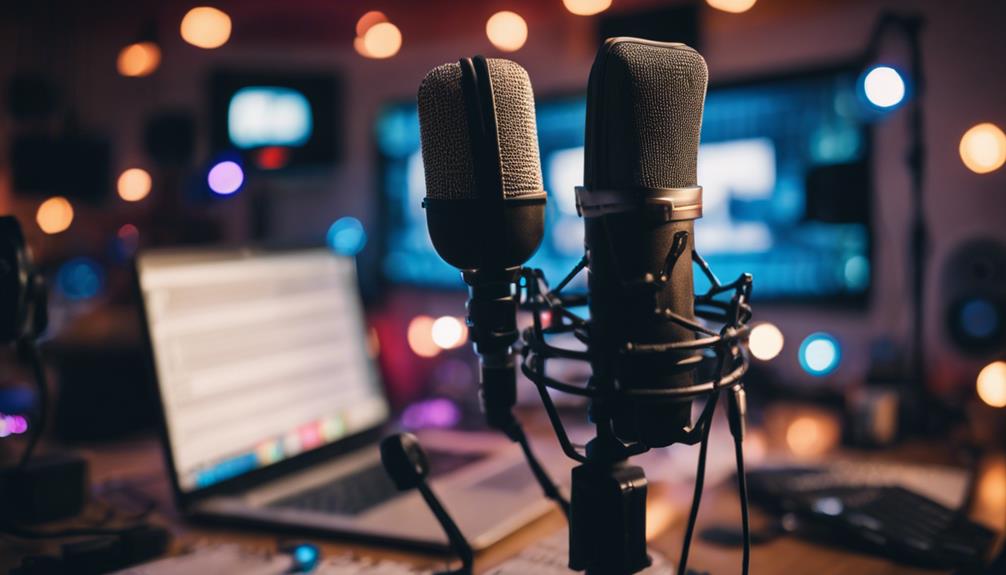
YouTube offers several ways to monetize your music content, from ad revenue strategies to brand sponsorships and partnerships.
You can also boost your earnings through merchandise sales and licensing deals.
Understanding these options can help you optimize your channel’s profitability and grow your music career.
Ad Revenue Strategies
To start earning ad revenue on YouTube, you need to reach 1,000 subscribers and 4,000 watch hours in the past year. Once you hit these milestones, you can apply for monetization and start earning from your music videos. YouTube pays 55% of the ad revenue to video creators, which typically amounts to around $0.01 to $0.03 per view.
To maximize your earnings, focus on targeting high-paying keywords in your video descriptions and titles. High engagement is essential, so create content that keeps viewers watching and interacting. You can also enhance your revenue streams with YouTube memberships, Super Chats, and channel merchandise.
Here are three strategies to boost your ad revenue:
- Target High-Paying Keywords: Research and include keywords that attract higher ad bids. This can significantly increase your ad revenue.
- Optimize for Engagement: Encourage likes, comments, and shares. Higher engagement can lead to more views and higher ad revenue.
- Leverage Additional Revenue Streams: Use YouTube memberships, Super Chats, and channel merchandise to supplement your ad income.
Sponsorship and Partnerships
Partnering with brands for sponsored content on your YouTube channel can greatly enhance your income and open doors to exciting collaborations. YouTube monetization allows you to earn revenue through ads placed on your videos. However, sponsorship deals can greatly boost your earnings. By promoting products or services in your videos, you receive compensation from brands keen to tap into your audience.
When negotiating these partnership deals, your reach and engagement are vital factors. Brands look at how many viewers your content attracts and how actively they engage with it. Higher numbers can lead to better compensation.
It’s not just about the cash, though. Successful partnerships can lead to additional income streams and future collaborations with other brands, further expanding your influence and opportunities.
Creating sponsored content should feel authentic to maintain trust with your audience. Integrating the brand seamlessly into your videos keeps viewers engaged and helps the partnership feel natural.
Merchandise and Licensing
Selling merchandise and licensing your music can greatly boost your income as a musician on YouTube. Merchandise sales can be a substantial income source, often surpassing music sales. By creating custom merchandise like t-shirts, posters, and accessories, you can connect with fans and increase your earnings. Online platforms like Shopify make it easy to design, produce, and sell your merch.
YouTube monetization offers additional opportunities. By joining the YouTube Partner Program, you can earn money from ads shown on your videos. But that’s not all. You can also benefit from:
- Sponsored content: Partner with brands for paid promotions.
- YouTube memberships: Offer exclusive content to paying subscribers.
- Merchandise shelf: Promote your custom merchandise directly on your channel.
Licensing music is another powerful income stream. When your music is used in films, TV shows, or commercials, you can earn substantial upfront fees and ongoing royalties. This can significantly supplement your income, providing a steady revenue stream beyond YouTube monetization.
Next up, learn all about music streaming platforms in this guide.
